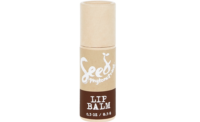How “Good” Is Your Brand?
How “Good” Is Your Brand?
By Jonathan Ford
Can packaging help brands balance style and ethics to win the “goodness” war?
How good are you? On a daily basis, people the world over are starting to embrace a more civic-minded approach and look at ways to better interact with one another; to be “more good” in their relations and how they conduct their lives. Goodness is also becoming increasingly important in the business world, with the pressures of having a corporate social conscience and being fiscally responsible going hand in hand.
These are basic principles of what we see as “goodness” but, for brands, the approach needs to be built on a more meaningful, long-term basis. How? By forging the same personal and meaningful connections and embodying the very values and qualities of people your customers choose to befriend. Consumers want brands to interact with and engage them, to be respectful, honest, authentic, socially smart, creative, kind, caring, fun…
A tall order? Or, is this a necessary shift in thinking about the “good” agenda? I’ll take a look at the issues surrounding goodness and attempt to provide you with future direction for your brand.
Is worthy good enough?
Let’s take a step back and see what brands are already doing to embrace goodness. Allegro Coffee, for one, wears its heart on its sleeve, literally. On the brand’s Organic Café Sumaq Tanta Coffee packs are colorful sketch drawings of Peruvians, dressed in traditional garments and surrounded by a fertile coffee-growing plantation. There is an immediate sense of regionality and authenticity to the product; the coffee connoisseur realizes this is a handcrafted product where the face behind the product matters. As highlighted on the brand’s point-of-sale materials, “Allegro Coffee Company gives 5% of its net profits to support the communities where our coffee is grown and our local Colorado neighborhoods.”
Do people drink a cup of Allegro because of its regional-inspired packaging, because it’s a great tasting coffee or because Allegro is a “good” brand and purchasing it has positive implications on South American coffee farmers? Chances are they choose Allegro for all of the above reasons, and so it’s important that the brand’s packaging mirrors the company values.
But, honestly, how much do consumers really care? These days, virtually any brand they buy is affiliated with a charity or making claims of doing “good”. But that’s increasingly just not good enough. Consumers want brands to forge a personal and honest connection and not just imply goodness through marketing and PR.
The key is to marry goodness with desirability. The Allegro packaging is true to the brand, but it is also important that it is desirable for a style and image-led consumer. Brand owners need to remember that packaging design is the brand’s key visual medium; the key physical and mental touchpoint that can make a personal connection and promote what’s good. From a packaging perspective this translates to a considered design process that focuses not just on the creation of a “beautiful looking” package, but the creation of an aesthetically pleasing package that also delivers a meaningful message in an civic-minded or environmentally friendly way.
Building goodness through packaging design
There are also excellent examples of brands that see the benefit of integrating both style and ethics within the chocolate category. Years ago, creating a luxury chocolate brand that was also environmentally sound might have seemed like an impossible task. But that is exactly what Green & Black’s chocolate has done. Even the name, which refers to the greenness of the firm’s principles and the blackness of its cocoa-rich chocolate, embodies this ideal.
When it launched, Green & Black’s Maya Gold chocolate bar was the world’s first organic chocolate bar and the first product to be awarded the Fairtrade Mark, an independent consumer label that appears on UK products as a bold black “F” to guarantee that the third-world producers of the product have been given a “better deal”. The original packaging prominently featured the mark as a differentiating symbol in the saturated confectionary market. But as the brand grew in awareness, the packaging highlighted its ethical side less, promoting instead the quality and organic virtues of the chocolate. Today, on back-of-pack, there is a short introduction to the Green & Black story inviting chocolate lovers to learn more about the care that goes into their chocolate, read the inside of the wrapper and visit the company’s web site.
Holistic goodness
Essentially, if the packaging and the product offer do not marry, then the brand message becomes fragmented and confused. The challenge to designers moving forward will be to take more responsibility and ensure that what they offer is holistic—and not a gimmick—and to use design to communicate the good messages.
Seventh Generation, the leading U.S. marketer of non-toxic, environmentally safe household and personal care products, is a brand with a well-developed vision of what it means to be a good corporate citizen. Says Jeffrey Hollender, president and chief responsibility officer, in Seventh Generation’s annual report: “We view our engagement with corporate responsibility as a never-ending journey, one that plays out in the everyday decisions and struggles we face in running our business.”
Clever brands like Seventh Generation recognize the importance of using packaging to present their values and appreciate that even in the somewhat benign and uninspiring area of “low involvement” purchasing, smart packaging can subtly highlight the good values of a brand and lead to increased sales.
On every Seventh Generation package is a recognizable jagged green leaf—an immediate visual signifier that the product is a friend of the environment and a supporter of green initiatives. In addition, the tagline: “‘In our every deliberation we must consider the impact of our decisions on the next seven generations’ —from the Great Law of the Iroquois Confederacy”, serves as a reminder that the environmental message is at the core of the brand.
And while the company makes donations to organizations that have a focus on human and/or animal health issues relevant to its products, and also sponsors a variety of other socially responsible and environmentally related projects, it does not advertise all of its good behavior on-pack (there wouldn’t be space!).
The brand recognizes that its socially conscious consumer will be intrigued enough by key environmental visual triggers to learn more about the company. The interlinked notions of responsibility, accountability and transparency, which are the driving forces behind the company, are also seamlessly integrated across every other aspect of the brand (advertising, product, customer service). And, as a result, Seventh Generation as product, as brand, as friend, as way of life … is desirable.
How can brands remain really good?
Brand owners must not forget that success is firmly rooted in the power of consumer desire. Brands cannot just imply good values; moving forward, brand teams need to look at better ways of working as a collective to combine design aesthetics, consumer desire and corporate social responsibility.
In this way, goodness is built into the creative process from the start. The brand message is integrated, consistent and, above all, relevant, which means the overall brand offer should be both good and desirable on a long-term basis.
That was the objective Fuseproject had with its most recent packaging endeavor. The brand’s new bio-based underwear packaging material is designed to disintegrate in the washer. Rather than introduce unnecessary packaging into the waste stream, the brand created a corn-starch-based, semi-rigid Styrofoam-like bio wrap impregnated with trace amounts of laundry detergent. The idea behind the project was that consumers would buy the underwear and then toss the entire package into the washer. The water would dissolve the package and the detergent would soften the cotton undergarment.
In every corner of the world, there is an increased appreciation for such an eco-intelligent perspective at all stages of the development process. In Holland, a group called Pre has developed software for product and packaging designers that enables them to model a complex product and its life cycle. The software calculates the environmental load and shows which parts of the product “weigh” the most. These elements can then be rethought to produce a more environmentally sound package.
Similarly, Paper Profile, a voluntary environmental product declaration scheme developed and provided by leading European paper producers, enables paper buyers to make well-informed product choices by presenting figures on essential environmental parameters in a uniform way for specific products.
Truly good brands look to the future and how they can build in goodness on a long-term basis. They are good because, for example, they are green or because they donate funds and help third parties. But the successful good brands of the future will be this and more. They will be consistent and relevant so consumers can fully believe in what they stand for. They will not try to be all things to all consumers, but will enter only those categories where it makes sense for them to do so and where the consumer will appreciate their presence.
A good future
To be good today and remain good and desirable in the future, brands need to remember that goodness is more than skin deep. When it is part of a collective new product development and innovation process, packaging design has the power to inspire and bring positive change and to create brands that are respectful, honest, authentic, socially smart, understanding, creative, kind, caring, fun … and, above all, truly good. BP
The author, Jonathan Ford, is creative partner of Pearlfisher, a London and New York future-focused design consultancy. Contact him at jonathan@pearlfisher.com.
Timberland Encourages Consumers to Tread Lightly
Timberland has made a name for itself by demonstrating a dedication to quality products and a commitment to “doing well and doing good”. Toward this end, the popular outdoor footwear and apparel brand recently announced it will implement a footwear packaging initiative that reduces the company’s environmental impact and provides consumers with information to help guide them in the purchasing process. The initiative, said to be the first of its kind in the retail industry, will be seen in stores later this year.
Essentially, the footwear brand will begin placing a “nutritional label” on each package to indicate where it was manufactured, how it was produced and its effect on the environment.
“Our goal is to reduce our impact on the environment while engaging consumers to take action,” says Jeffrey Swartz, Timberland president and CEO. “This packaging and labeling initiative should make our industry more transparent and give consumers the information they need to make smart buying decisions.”
The initiative will also include the use of footwear boxes made from 100 percent recycled post-consumer waste fiber that contain no chemical glues and only soy-based inks. Messaging inside the box asks consumers, “What kind of footprint will you leave?”
Looking for a reprint of this article?
From high-res PDFs to custom plaques, order your copy today!








